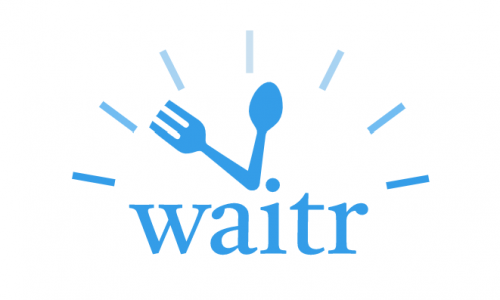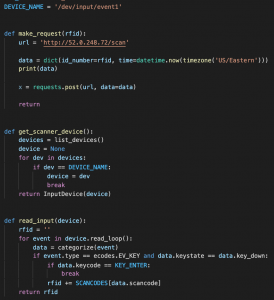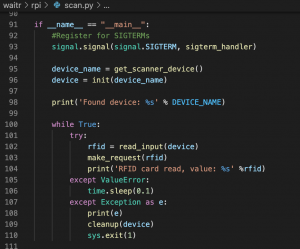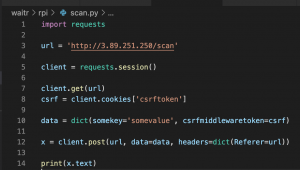This week, Sophie and I worked on setting up the second RPi with a commercial RFID scanner to be used for the exit scanner. We were able to successfully connect it to CMU-Device and upload code to send the scan data to our web application. I added error-checks on the scanned data in views.py, ensuring that we only add consider entry and exit scans that occur during business hours, on the same day, and with entry time being earlier than exit time. In doing so, we hope to catch any edge cases that could occur through usage.

I also fixed our frontend view of the web application on a mobile device. Before, the frontend used to be a bit squished, but I now have the viewport considering the width to be the device width as opposed to the expected content width. A screen recording on my mobile device can be found here (taken around 2:30 PM on Saturday, when the Exchange closes at 3 PM). In finishing off the frontend, I removed our unnecessary feedback page.
I am on schedule. For next week, Sophie and I hope to add some security measures to the web application and fine tune the live updating feature to incorporate more data. We also hope to integrate with Sam’s circuit, updating any necessary code to facilitate the connection.




